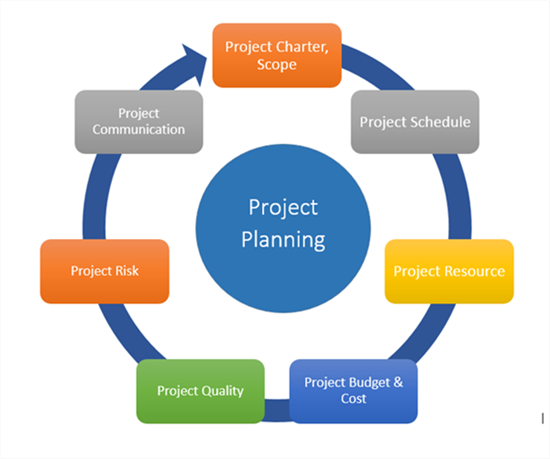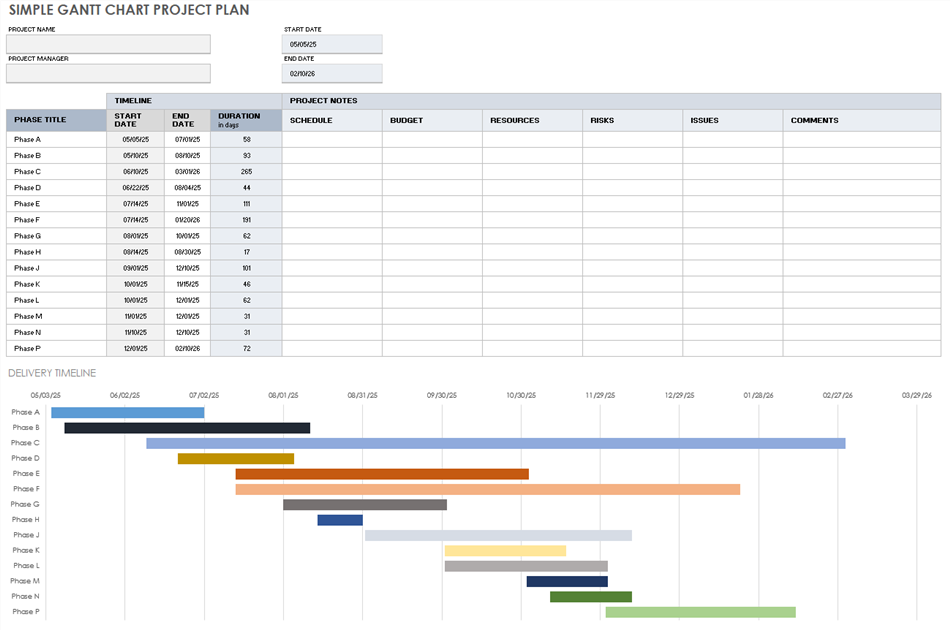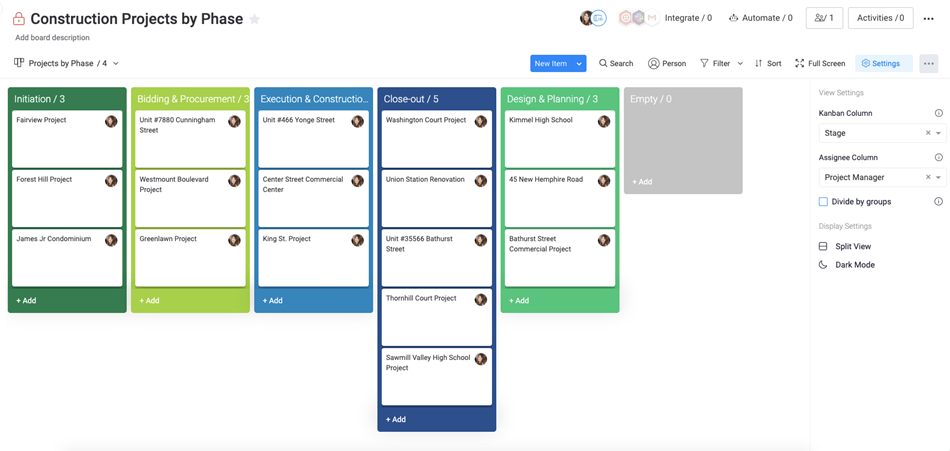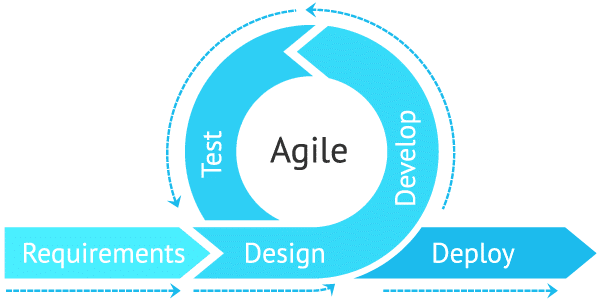30 Project Management Terms for 2023
The theoretical side of project management is informed by the success or failure of certain methodologies when applied to specific challenges. Each of these approaches has been in use for decades, and they have very formalized elements that are present in almost every case or at least could be useful occasionally. To accurately describe those elements, it’s necessary to use terminology consistent with the chosen strategic approach.
To complicate matters further, the language of business is constantly evolving and new terms enter the vernacular on a regular basis. It’s a big part of a project manager’s job to stay well-informed about new concepts and use the correct words for them, so the learning process never really ends. Of course, having a good foundation matters, and it’s easier to adopt new terms if you already have a solid grasp of the most essential ideas related to the chosen approach.

Top Project Management Terms
This article aims to provide an overview of project management terminology that is relevant in 2023, with special attention paid to business methodologies that are popular at the moment.
Table of Contents: hide
General Project Management Terms
Gantt Project Management Terms
Kanban Project Management Terms
Top 30 Project Management Terms You Should Know
General Project Management Terms

General Project Management
Many business terms are independent of the chosen method and can be used to explain key aspects of practically any project. They form the core of the project management vocabulary and should be well understood by any person attempting to coordinate a team of professionals.
- Workflow– The totality of activities within a project and their mutual relationships are represented as a workflow. This is a big picture view of the entire endeavor and can be visualized to provide a clear roadmap to the goal and show what each team member should do.
- Timeline– Expected delivery times for each task can be marked on an interactive calendar, making it easier to predict when key points of the project may be reached. The projected timeline may need to be corrected as delays on certain tasks could affect the next ones.
- Budget– A table listing all planned expenses and outlining how the existing funds should be spent. Specific items within the budget should be defined as precisely as possible in terms of quantity and value per unit, with sources of funding attached to them.
- Benchmark– An achievement that matches a competitor’s high mark or a theoretical standard identified in advance. Benchmarks serve for comparison between expectations and reality, and allow teams to strive for a greater level of quality and performance.
- Stakeholder– Any person with a vested interest in the outcome of the project. In addition to people directly involved with the execution of key activities, this group also includes the management, company owners, investors, customers, as well as industry experts and media.
- Deliverable– Any item, document, or report that clearly demonstrates that a certain task has been completed. Defining deliverables for each part of the project is among the most important decisions that team managers need to make, and it can impact the final delivery time
- Consumable– Any resource that is available in finite supply and is not renewable. This includes financial resources, material goods, as well as utilities such as electricity or computing power. Ensuring that enough consumables are at hand for all the planned activities is mandatory.
- Work Breakdown Structure (WBS)– This concept unifies all task assignments on a project into a general plan for the entire team. It can help to determine the most efficient ways to complete the job and identify critical areas in which additional resources might be needed.
- Quality Assurance (QA)– Wide array of practices and procedures aimed at standardizing and safeguarding the quality of the delivered products or services. This concept should be deeply integrated into the business model of every enterprise regardless of its size.
Gantt Project Management Terms

Gantt Project Management
Many organizations use visual tools to organize project activities, with Gantt charts being the most common way to achieve that. This approach requires specific terms to be used, describing how different activities in the project are mutually connected. Here are the most widely used phrases to keep in mind:
- Bar chart diagram– This is a type of chart that summarizes key tasks and activities in the form of a visual bar stack. It’s a great macro view tool that helps project planners have a complete overview of the main objectives and the processes needed to achieve them.
- Dependencies– Connections between individual elements of the project based on actual relations within the overall plan. Co-dependent activities have to be carefully coordinated and performed in the right order, as change in one element can directly impact the other.
- Milestone– Critical events or accomplishments that clearly indicate a certain stage of the project has been completed. Milestones have to be precisely defined and impartially assessed, along with the instructions how to proceed once they are reached.
- Event chain– A sequence of key actions that allow the project to progress towards its completion. The planned events are typically co-dependent on each other and should be carefully organized to enable smooth functioning of the entire chain.
- Critical path– The estimated shortest path from the original project idea to fully realized long-term objectives. This path can be determined based on the required tasks, available resources, expected obstacles, and other relevant parameters.
- Float time– Flexible amount of time that is left to work on a certain task. If the responsible team members fail to complete it within this timeframe, the entire timeline could be jeopardized. That’s why leaving sufficient float time for the most critical tasks is a safe practice.
Kanban Project Management Terms

Kanban Project Management
Due to its combination of simplicity, scalability, and wide applicability, Kanban methodology is used in many different business sectors with impressive results. It strives to achieve a balance between production capacity and market demand and guarantee rational use of resources. Some of the principal terms used in this paradigm include the following:
- Project board– Broad representation of the planned course of the project and all the essential activities within them. Inspired by traditional bulletin boards with stickers, this simple tool facilitates collaboration as anyone can add tasks or change their status.
- Task card– Visual symbol representing a specific task assigned to a team member and tied to other events. Many different types of cards can be created to signify specific tasks and easily placed on the appropriate spot on the project board.
- Bottleneck– The segment of the project in which the incoming requests can’t be adequately responded to with the available resources. The existence of a bottleneck at a critical point in the workflow can greatly slow down the entire process and put the outcomes in question.
- Signal– An indicator that alerts the system that a certain part of the process is short on a critical resource and that action may need to be taken in order to maintain the current level of productivity. Signals can originate from any card within the project.
- Demand forecast– A document estimating the current level of demand for the product or service in the marketplace. This aspect of business planning affects how the production side is organized and what volume of supplies is needed.
- Push/Pull– Two groups of factors that can drive production. Push factors come from the supply side and typically represent opportunities to make the manufacturing process more efficient. Pull factors are caused by rising demand and are interpreted as a call for a volume increase.
- Three bin system– Specific feature of the Kanban methodology that separates the locations of key resources. The bins in this system refer to the supplier, the manufacturer, and the marketplace, and shortage in any of the bins cause a disruption of the normal workflow.
Agile Project Management Terms

Agile Project Management
Agile philosophy and the associated Scrum work methodology are most readily used in software development, and they empower teams to work more flexibly and solve problems proactively. Some of the terms necessary for understanding how this approach functions include:
- Scrum master– Team leader in charge of the project who coordinates other members and communicates directly with stakeholders. Unlike traditional managers, Scrum masters have mostly hands-off approach and allow workers to perform their tasks in any way they choose.
- Daily scrum – Short daily meeting where all team members are reporting their progress and suggesting possible solutions for the tasks at hand. This meeting shouldn’t last for more than 15 minutes, and is typically organized at the beginning of the work day.
- Sprint– An effort to solve a technical problem or complete certain activity within a pre-defined period of time. One or more team members may be responsible with conducting a sprint, while the final output should be a deliverable that potentially leads to an increment.
- Burndown chart– The list of all remaining activities that must be completed before the project can be considered fully realized. This chart is updated every time a sprint produces a desirable outcome, and it informs the delivery plans.
- Increment– A measure of progress in accomplishment of the project objectives that is the result of one or more completed sprints. The progress needs to be demonstrated by introduction of fully functional features that may be used in present form or developed further.
Meeting Project Management Terms
Meetings are a big part of any project, regardless of whether they occur physically in the office or virtually through a digital communication app. Understanding the basic terminology pertaining to meetings is a requirement for successful participation. Here are a few terms to remember:
- Meeting Agenda– The plan for the content of the meeting that can include several items, as well as the time reserved to discuss them. The agenda is usually distributed by the organizer to all participants ahead of the scheduled meeting.
- Meeting minutes– This term doesn’t refer to the time, but rather to details of the meeting that are worth including in a brief summary. Meeting minutes are created by taking notes, and serve as a reminder of everyone’s perspective as well as the actionable conclusions.
- Follow up– Any activities agreed during the meeting need to be realized or ‘followed up’. Individual team members may have different follow up duties, and they can use minutes from the meeting to guide them in the execution phase.
Final Words
Learning the professional terminology of project management can do a lot to help you advance your career. However, this is not easy since the most commonly used terms are gradually evolving along with the business practices they refer to. Ambitious project managers have to constantly improve their understanding of the various possibilities and adopt new expressions that more accurately describe business processes and events. Most of the key project management terms for 2023 will likely remain relevant for the next several years, but knowledge needs to be refreshed periodically to keep up with newly minted or popularized terms.



